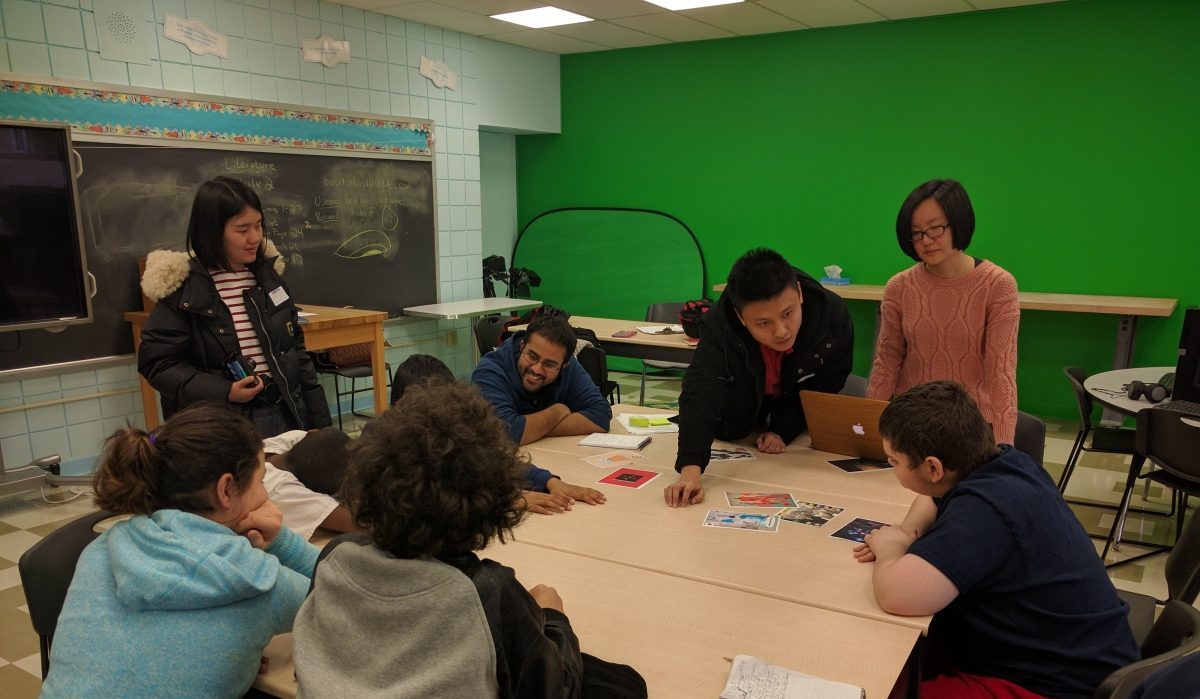In the week 2, we have decided team members’ roles and responsibilities.
- Jibran Khan is the game designer
- Jun Wang is the Co-producer and UI/UX designer
- Lena Wang is the Co-producer and 2D/3D artist
- Carl Zhang is the programmer
We would like to gain real working experience with a client, learning about how an actual game is created through a detailed design process. We believe we will benefit from this lifelong experience, and keep creating new games with what we learned here.
We hope our game can be simple and intuitive to interact with. It should provide insightful game-play to the audience. By the end of this semester, we hope the game can be published to the app store.
After discussion with the clients, the final deliverable should be a ready-to-ship iPad game. The game should be able to teach students from 4th to 6th grade who required alternative learning, the basic concept of angles through a fun experience.
Below is our tentative production schedule:
- Week 1 – Week 2: Research and Brainstorming
- Week 3 – Week 5: Design and Prototyping
- Week 6 – Week 10: Development and Testing
- Week 8: Alpha and Testing
- Week 11: Beta and Testing
- Week 12- Week 14: Testing and Refining
- Week 15: Final sprint
We adopt agile production method, so everything is very flexible.
-and also about life long learning, in terms of how you learn something above and beyond school…
-start thinking of the specific deliverable you have (in relation to the semester calendar
-and how this lines up with your project cycle and scheduling
Jun and Lena sketched out a few design solutions for logo, half-sheet and poster. The branding materials should convey a pleasant educational experience for the children, with a focus on angle education and adoption of bright colors.
On Wednesday, we met Jesse and presented our initial ideas to him, and he suggested various research avenues and told us to create lots of prototypes.
On Friday, the team visited the clients, Audrey from Intermediate Unit 1 and students & teacher from Colonial School. We presented game research to the student and studies about their interest, such as what kind of games, and art style they like. We collected feedback and documented this research.
Based on what we learned from the visit, we had a better understanding about our audience and came up with many new ideas based on angles which was confirmed to be the main subject.
We presented a number of pictures to the students to gauge their art interest.
As them what kind of games they played
Asked them what kind of music they listen to
Spoke the the teacher and narrowed down a subject
Based on what we learned from the visit, we had a better understanding about our audience. We then came up with many new ideas based on angles which was confirmed to be the main subject.
Our lead programmer Carl then built a prototype on the iPad based on one of our ideas. The prototype detected the drawing of acute and obtuse angles to explore teaching the special properties of angles (obtuse, acute, straight, right angle).
At the start of the week we presented the ideas we had in mind from week 1 to our supervisors. Our supervisors gave us feedback and we filtered down the initial ideas based on complexity and technical issues.
On Wednesday, we met Jesse and presented our initial ideas to him. Jesse gave us advice about our project suggesting we look into a number of educational games such as Battleship Numberline, and create lots of prototypes.






